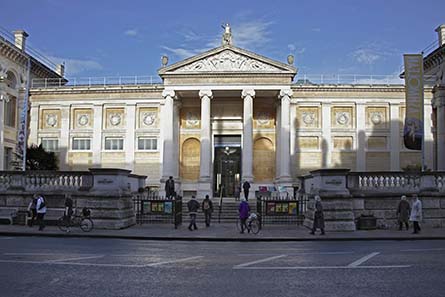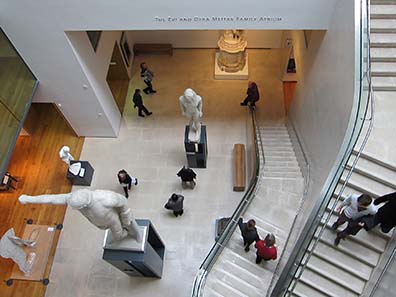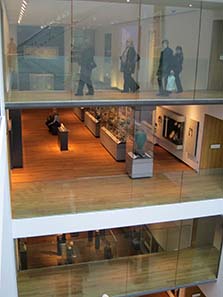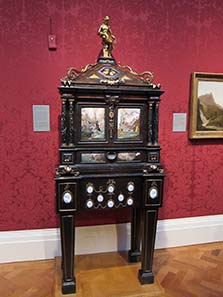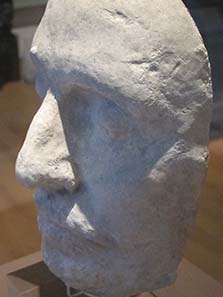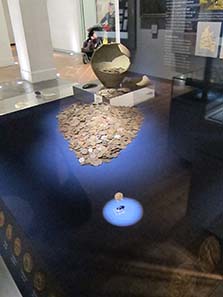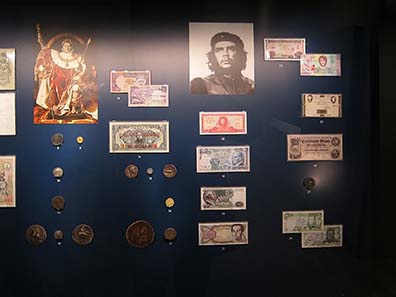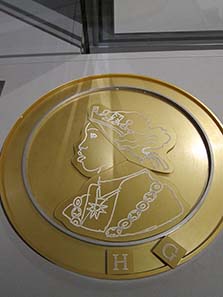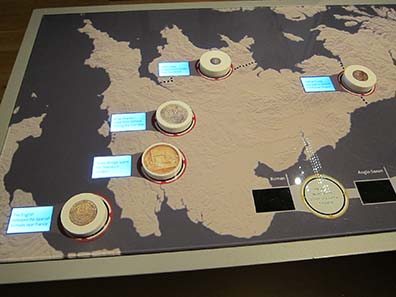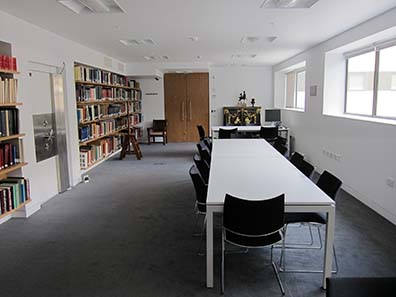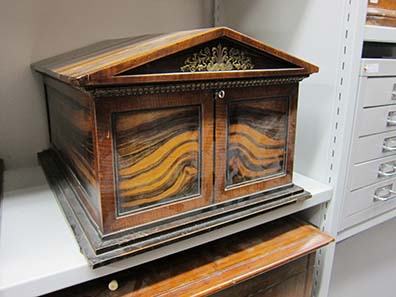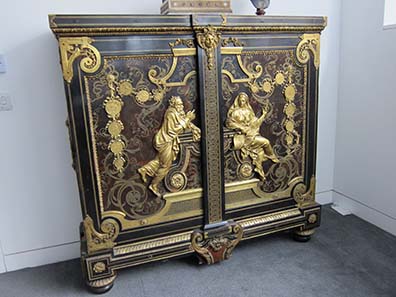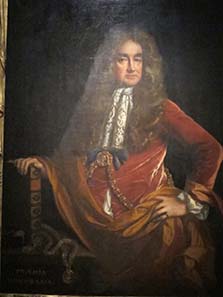March 31, 2011 – One object next to the other, some curators still think, that’s the art of museology. And they are very surprised, when visitors admit that they found their tour a little bit boring. We need new conceptions to mesmerize traditional and new visitors. The renovated Ashmolean shows how to do it.
The new entrance of the renovated museum is still the old one. Photo: ©Ashmolean Museum.
Only the classical entrance of the building accomplished in 1845 was conserved. Between 2006 and 2009 the showrooms and all facilities for administration and scholarship were rebuilt.
The central court. Photo: UK.
The central court is the starting point for the numerous galleries. That’s the reason, why the orientation is no problem for the visitors.
Galleries and gangways. Photo: UK.
The principle is called openness. The Ashmolean houses treasures of many cultures, and those responsible decided to present them not separately but in the context of other cultures. The building supports this conception. Vistas increase the understanding of intercultural relations.
Islamic gallery. Photo: UK.
The galleries are more than a place for objects, they want to communicate a message. The Islamic gallery for example addresses an art without pictures. The coins are used here in order to trace the development of this art: away from the Byzantine patterns to purely abstract artworks.
The Fitzwilliam Coin Cabinet. Photo: UK.
The gallery of European art thematizes that collecting of coins used to be a question of class. That’s the only reason, why we find here the beautiful coin cabinet of the Fitzwilliam. It was bought by an English nobleman touring to Florence in the 18th century. Until 1949 it decorated the Fitzwilliam’s family seat at Wentworth Woodhouse.
Human Image. Photo: UK.
There are galleries, which are designed to be transcultural. This gallery is dedicated to the human image in art.
Death mask of Oliver Cromwell. Photo: UK.
Between originals and casts a treasure of the Ashmolean is hidden, the death mask of Oliver Cromwell. Its human approachability challenges all the portraits next to it: In which way did artists change the appearance of the powerful to serve their power?
The Money Gallery. Photo: UK.
The Money Gallery is especially popular and always well attended.
Roman hoard found in 2003. Photo: UK.
The Money Gallery features the highlights of the Ashmolean coin collection, including a hoard found in 2003, which enclosed an antoninianus. This coin proved the existence of Domitianus, a Late Roman emperor reigning ca. 271.
Showcase dedicated to the portrait of rulers. Photo: UK.
The exhibition is not organized strictly chronological. The numismatists of the Ashmolean wanted to demonstrate that some phenomena exist in many cultures. They confront a coin of Geta, whose head was erased…
Iranian banknote – featuring the portrait of the Shah of Persia before and after overprinting. Photo: UK.
…with an Iranian banknote. The emission was printed in the UK. When it was accomplished the Shah shown on the note was already in exile. In order to satisfy their new business partners, the portrait of the Shah had to be overprinted.
Do it yourself coin. Photo: UK.
The Money Gallery is a wonderful place for young visitors. They will spot many attractions, which teach numismatics through fun and games.
Another attraction of the Money Gallery. Photo: UK.
Here the visitors are asked to connect coins, events and dates.
A large size Oxford Crown. Photo: UK.
This Oxford Crown is a hands-on object. Here the cityscape of Oxford – unique in British numismatics – can clearly be seen between the legs of the horse.
The studies room. Photo: UK.
The Ashmolean is more than a tourist attraction. Here, young archaeologists, historians and numismatists are trained. This room is the place for numismatic studies. It is located next to the strong room, where the extensive coin collection is stored under conservationally ideal conditions.
An ancient coin cabinet in the strong room. Photo: UK.
It is strictly forbidden to take photos in the strong room. And we certainly won’t break a secret. Here is just one information: The coins still stay in their old wooden cabinets, for which the new shelves were built.
A magnificent coin cabinet. Photo: UK.
Everything is up-to-date. This magnificent old coin cabinet appears to be a little bit misplaced.
The numismatic department. Photo: UK.
The new facilities offer an own room to each member of the staff.
Elias Ashmole, painting of John Riley. Photo: UK.
I guess Elias Ashmole would have been very happy, if he was able to see, how “his” museum was adapted to the needs of the 21st century!
Ursula Kampmann



